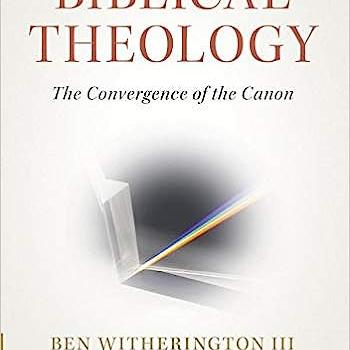Perhaps you have seen his TV show— Snake Church, a reality show on Nat. Geo. Andrew Hamblin is a member of the Church of God. His church is on a gravel road in Campbell County, north of Knoxville. And recently he has gotten some attention he really didn’t want. The Law came and took away a bunch of poisonous snakes from his church. He sees this as a violation of church and state. They see it as a violation of the law of the state of Tenn. which does indeed regulate who can and can’t have such dangerous critters. Here is a link to a recent article in the NY Times all about the matter—
From what I can tell, Hamblin is indeed a devout low church Protestant Christian. He’s not a charlatan, not in it for the money or fame. He’s just a Christian with the mistaken notion that the Bible promotes, indeed even commands snake handling. The truth is, he is in all likelihood wrong about this view. And if Mark 16.9ff. is no part of the original inspired text of the Bible, then snake-handling cannot be protected under some freedom to practice Biblical religion, or separation of church and state notions.
So what is the evidence in regard to what is called the long-ending of Mark. It’s a technical matter and I will get to that in a moment. Best we can tell, the long ending of Mark is a patische of several early Christian sources, cooked up sometime in the second century A.D. because Mark 16.8 didn’t seem like a proper ending. On that point I certainly agree. Mark 16.8 is probably not the original ending of Mark (see my Eerdmans commentary on Mark).
Probably the original ending can be found in Matt. 28 which takes over 95% of Mark and incorporates it into that Gospel. Probably Mark ended with an appearance to the women (see Mt. 28.9-10) followed by an appearance of Jesus in Galilee. Mark had foreshadowed this by Jesus saying he would ‘go before them into Galilee’ and it is natural to assume Mark would record the fulfillment of that promise.
Before we get to the text criticism of the matter (and we can thank the hegemony in America of the King James Version for spurring this practice on in the U.S.) it will be useful to note a few facts: 1) without disputing Mr. Hamblin’s faith, it is a scientific fact that one can build up an immunity, a sufficient number of anti-bodies in one’s system, to not be fatally harmed by snake bite. This is simply a fact. Now I have no idea whether Mr. Hamblin has done this by taking anti-venom, or simply by building up a tolerance over a period of time, but my point is simple— it doesn’t require Christian faith to survive snake bites. 2) And yes, if one doesn’t have such anti-bodies in one’s system one is playing a very dangerous game. Just last year a minister from West Virginia died from such snake bites. There are apparently about 125 snake-handling Protestant churches still in existence, the vast majority in the old South, and all of them under the mistaken impression that such practices are commended if not commanded by the ending of Mark’s Gospel. So let’s get to that.
Firstly, lets be clear that we do not have many very early manuscripts of Mark’s Gospel. This is a depressing fact, but it is a fact that it is very poorly attested in the early Christian centuries. In the important recent study by Prof. Peter Head of the U.K. entitled “The Early Text of Mark” in a volume edited by Charles Hill and Michael Krueger entitled The Early Text of the New Testament (OUP, 2012), we learn that we have exactly one (or possibly two) early papyri that preserve a part of Mark’s Gospel. By early I mean before the 4th century when we begin to have the codexes. P45 is the earliest mss. we have, one of the Chester Beatty papyri, but sadly it is poorly preserved, and in any case it includes no verses from Mark 16. By oral report as well, the new fragment of Mark that the Green Collection has, also lacks any portion of Mk. 16. Of more interest is the Syriac version of Mark found in modernity at St. Catherine’s monastery at Mt. Sinai. But it too apparently lacks Mark 16.9-20. More importantly (since absence of evidence is not the same thing as evidence of absence) is the fact that we do not have the so-called Long Ending of Mark in the great codexes Aleph, and B. I was able to double check on this when I was at the British Library in London last June. The long ending is nowhere to be found, and more importantly these codexes go on beyond Mark to Luke, making clear that as far as these copiers were concerned, Mark. 16.9-20 was not an original part of the Gospel of Mark. Another Greek mss. 304, also does not have this ending for Mark. In addition to this evidence, mostly from the eastern end of the Empire, we have the evidence of the Old Latin Codex Bobiensis (called ITk) which does not have Mk. 16.9-20, and further there is the Sinaitic Syriac which lacks it, as does about one hundred Armenian mss. the two oldest Georgian mss. (A.D. 897, and A.D. 913), and more importantly both Origen and Eusebius attest to the fact that these verses were not present in most of the Greek manuscripts of Mark known to them in the 4th century.
It really does not matter that Mark. 16.9ff. is present in ‘the majority’ of later witnesses, including in the Textus Receptus, which is the major basis for the KJV and other early English translations. Manuscripts need to be weighed, not merely counted, and our earliest and best manuscripts of Mark do not include these verses. See the full discussion in the still valuable report in B.M. Metzger’ s A Textual Commentary on the Greek NT 3rd edition pp. 122-26. There is in fact no clear evidence for Mark 16.9-20 prior to the 5th century A.D., though in all likelihood it was put together in the 2nd or third centuries A.D. As Metzger says, it reflects non-Mark style, and is a combination of materials from Matthew, Luke, and John, with some independent traditions about snake-handling and poison.
In short, both the internal and the external evidence is against Mark 16.9ff. being an original part of Mark’s Gospel. It was rather added by some scribe well after Mark wrote his Gospel. Since it is, or should be the case that ‘text determines canon’, that is that what we want in our Greek NT is only the early original text written by the inspired author, in this case John Mark, then it should also be the case that what we want in our accurate translations of the Greek NT is only what was in the original text. This means that Mark 16.9-20 should not be seen as Scripture, not be seen as canonical. It simply is an interesting fragment reflecting some early Christian beliefs, not the beliefs of the earliest Christians who wrote the books of the NT.
And if that is all true…. then Rev. Hamblin is barking up the wrong tree, or should we say hissing up the wrong tree, when it comes to the issue of Mark 16, snake-handling, and seeing it as a practice which should be continued based on Scripture, and protected from the intrusions of State or Federal Law.


















